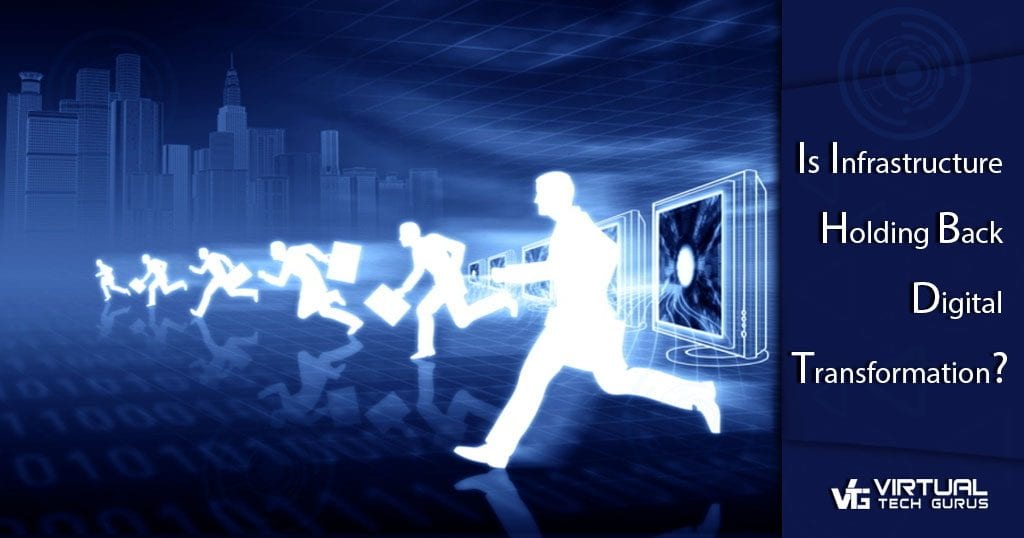
Is Infrastructure Holding Back Digital Transformation?
Digital transformation offers many benefits, and one of the most important is employee flexibility. When data, applications and services are available from the cloud, employees can work from any location on any device just as productively as their office colleagues.
That makes it easy to offer flexible working arrangements, make mobile workers more productive or support remote teams.
Overcoming Legacy Challenges
They’re great business benefits, improving employee experience and satisfaction. But, for IT, that means greater pressure on infrastructure and networks. Legacy infrastructure is simply not up to the task. It does not the reach, scale or performance to deliver ‘anywhere, anytime’ services with the speed, accessibility and reliability users demand. Cloud solutions have given employees high expectations.
However, security considerations may put limitations on cloud as the enabler. And, IT may not have the cloud skills in place to handle migration, application and service development, and ongoing management in a reasonable timescale.
There’s a further problem if applications and services are hosted in the cloud, but data is stored in an on-premise data center. The ‘round trip’ can slow access times for individual remote users as well as branch offices connected by legacy WAN to central resources. The result may be project delays, higher costs, limited benefits and employee frustration.
A Hybrid Approach
One alternative approach that can overcome the approach is to adopt hyperconverged infrastructure (HCI) and combine it with cloud-hosted applications and services. Hyperconvergence brings together compute, storage, networking and virtualization resources, converging them in a tightly integrated single system managed through a software layer.
This single scalable system, managed through an intuitive interface, eliminates the complexity of legacy datacenter infrastructure, which might have as many as 10 or 12 different elements to manage. Hyperconvergence also eliminates the time and cost of sourcing, deploying, managing and scaling legacy infrastructures that create inflexible silos and require specialized skills.
More important for IT teams focused on digital transformation, hyperconvergence offers cloud-like speed and agility, with significant improvements in performance, reliability and cost effectiveness over legacy systems. Combined with cloud-based applications and services, hyperconvergence offers the convenience of cloud with the security of on-premise infrastructure
Operational and Financial Gains
Commentators believe that this combination simplifies infrastructure by consolidating siloed functions while adding higher levels of automation to reduce the management burden. It also offers scalability at both infrastructure and application levels, ensuring that on-premise and cloud scaling are in synch.
Speed and flexibility also benefit from the HCI-cloud combination. IT can quickly develop a highly efficient infrastructure solution without the time-consuming process of design, procurement, installation, testing and deployment. That means lead times fall from months to weeks or days, ensuring that business can respond quickly to changing opportunities or challenges in a dynamic marketplace.
There are also important financial benefits. HCI eliminates the need for upfront capital investment, shifting the funding model from CAPEX to OPEX. Simpler infrastructure management, higher levels of automation, lower energy consumption and space requirements reduce operating costs, while delivering higher levels of reliability.
In fact, a study by IDC found that HCI deployments required more than 60 percent less management time and 50 percent less installation resource, and experienced up to 97 percent fewer unplanned downtime events.
Find Out More
If you would like to know more about our cloud and infrastructure services, please check out the articles and infographics on our website.
